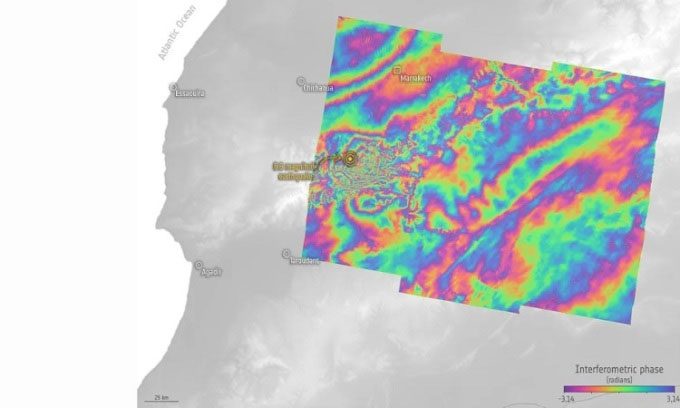A strong earthquake measuring 6.8 on the Richter scale struck western Morocco last week, causing the ground to shift by 15 cm according to satellite data.
Measurements from satellites revealed the extent of ground displacement caused by the 6.8-magnitude earthquake in Morocco last week, resulting in nearly 3,000 fatalities. The earthquake occurred in a rural area of the Atlas Mountains, approximately 75 km from the city of Marrakech on the evening of September 8. According to the European Space Agency (ESA), this region is situated at the boundary between the European and African tectonic plates, making it susceptible to seismic activity.

Image showing ground displacement due to the Morocco earthquake in September 2023. (Photo: Copernicus)
Radar measurements conducted by two Sentinel-1 satellites from Europe before and after the disaster revealed how much the tectonic plates shifted during the earthquake. According to the BBC, the ground was pushed up by as much as 15 cm in some areas, while others sank by 10 cm. The earthquake completely destroyed many villages, burying families under the rubble. Satellite imagery assists scientists and rescue teams in assessing the situation and the risk of aftershocks.
“Earth-observing satellites have a unique capability, providing not only a broad perspective of the affected area but also detailed information,” stated Simonetta Cheli, director of ESA’s Earth Observation Program. “The Copernicus Sentinel-1 mission is equipped with radar, allowing it to see through clouds and is often used for mapping severe flooding. In the case of the earthquake in Morocco, the mission’s value lies in measuring ground displacement, which is crucial information after the crisis has passed and recovery efforts begin.”
The two images used to create the interferogram showing ground displacement were captured on August 30 (more than a week before the earthquake) and September 11 (three days after the disaster).



















































